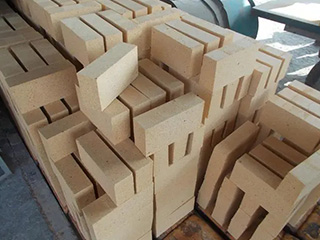Fireclay bricks are a type of refractory brick that is widely used in the construction of high-temperature furnaces, kilns, and incinerators. These bricks are made of a mixture of clay and other minerals and are designed to withstand extreme heat and chemical corrosion. In this guide, we will explore the properties and applications of fireclay bricks.

Properties of Fireclay Bricks
Fireclay bricks must have certain properties to perform effectively in high-temperature applications. The most important properties of fireclay bricks are:
1.Refractoriness: This is the ability of the material to withstand high temperatures without melting or degrading. Fireclay bricks must have high refractoriness to ensure their structural integrity under extreme heat.
2.Thermal conductivity: This is the ability of the material to conduct heat. Fireclay bricks must have low thermal conductivity to minimize heat loss.
3.Compressive strength: This is the ability of the material to resist deformation under compressive load. Fireclay bricks must have high compressive strength to withstand the weight of the process equipment and the thermal stresses.
4.Abrasion resistance: This is the ability of the material to resist wear caused by mechanical friction or erosion. Fireclay bricks must have high abrasion resistance to avoid degradation and erosion caused by the process fluids and gases.
5.Chemical stability: This is the ability of the material to resist chemical reactions with the process fluids and gases. Fireclay bricks must have high chemical stability to avoid degradation and erosion.
Applications of Fireclay Bricks
Fireclay bricks are commonly used in a variety of high-temperature applications, such as:
1.Fireplaces and chimneys: Fireclay bricks are used to line the walls and floors of fireplaces and chimneys to withstand the high temperatures and chemical reactions caused by the combustion of fuels.
2.Boiler and furnace linings: Fireclay bricks are used to line the walls, floors, and roofs of boilers and furnaces used in the power generation and steelmaking industries.
3.Kiln linings: Fireclay bricks are used to line the walls and roofs of kilns used in the ceramic and cement industries.
4.Incinerator linings: Fireclay bricks are used to line the walls, floors, and roofs of incinerators used in the waste management industry.
Benefits of Fireclay Bricks
Fireclay bricks offer several benefits in high-temperature applications, such as:
1.High refractoriness: Fireclay bricks can withstand temperatures up to 1,800°C (3,272°F) without melting or degrading.
2.Good thermal conductivity: Fireclay bricks have low thermal conductivity, which minimizes heat loss and improves energy efficiency.
3.High compressive strength: Fireclay bricks have high compressive strength, which allows them to support the weight of the process equipment and resist thermal stresses.
4.Good abrasion resistance: Fireclay bricks have good abrasion resistance, which minimizes degradation and erosion caused by the process fluids and gases.
5.Low cost: Fireclay bricks are relatively inexpensive compared to other refractory materials, such as alumina and zirconia.
Selection Criteria for Fireclay Bricks
The selection of fireclay bricks depends on the specific application requirements, such as the operating temperature, chemical environment, mechanical stress, and thermal shock. The important factors to consider when selecting fireclay bricks are:
1.Operating temperature: The fireclay brick must be able to withstand the maximum operating temperature of the application without melting or degrading.
2.Chemical environment: The fireclay brick must be able to resist chemical reactions with the process fluids and gases, such as acids, alkalis, and slags.
3.Mechanical stress: The fireclay brick must have sufficient mechanical strength to withstand the weight of the process equipment and the thermal stresses, such as expansion and contraction.
4.Thermal shock: The fireclay brick must have high thermal shock resistance to withstand rapid temperature changes without cracking or spalling.
5.Size and shape: The size and shape of the fireclay brick must be considered to ensure a proper fit and installation.
Conclusion
Fireclay bricks are a commonly used type of refractory brick that is designed to withstand extreme heat and chemical corrosion. They offer several benefits in high-temperature applications, such as high refractoriness, low thermal conductivity, high compressive strength, good abrasion resistance, and low cost. The selection of fireclay bricks depends on the specific application requirements, such as operating temperature, chemical environment, mechanical stress, and thermal shock. By understanding the properties, applications, and selection criteria of fireclay bricks, engineers and operators can choose the right material for their high-temperature process equipment and ensure optimal performance and longevity.
Contact: Mgr. Han
Phone: 0086-13589497465
Email: 1255953279@qq.com
Add: Industrial Area of Lingzi Town,Zichuan District,Zibo City, Shandong,China